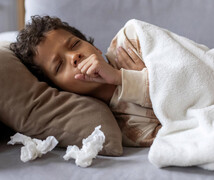Don’t let these common health issues stop your outdoor fun. Use this guide to take charge of your health.
1. Swimmer’s Ear
What is it: When water gets trapped in your tiny dark ear canal, it creates the perfect environment for bacteria and fungi growth, especially during the hot, humid months of summer.
What you can do: Use a swim cap or moldable earplugs to keep water out of your ears. Dry your ears with a towel after water contact. Alcohol drops can eliminate excess water in the ears, and make the environment less hospitable to fungus and bacteria. Cotton swabs are ok for cleaning your outer ear, but not your inner ear. “They remove protective ear wax and make your ears more prone to infection,” says Nikki McNight, a nurse practitioner at Duke Primary Care Croasdaile.
When to seek medical care: Pain that lasts for a day or two can be treated with ibuprofen or acetaminophen. If you experience swelling, fever, hearing loss or drainage from your ear, see your doctor. “You may have an infection, which may require antibiotic ear drops,” says Dr. McNight.
2. Heat Illness
What is it: When it’s extremely hot and humid, your body has a hard time controlling its temperature, explains Rex Dancel, MD, a family medicine doctor at Duke Primary Care Meadowmont in Chapel Hill. That’s when heat stress sets in, which can lead to more serious heat illnesses, like heat exhaustion and heat stroke. Heat stress often strikes the very young, very old, people with chronic diseases like diabetes or anyone who has overexerted in hot conditions.
What you can do: If you or your loved one experiences weakness, dizziness, or fatigue, get out of the heat immediately and into a cool, preferably air-conditioned environment, Dr. Dancel says. Drink fluids, such as water and fruit juices. Avoid caffeine and alcohol. Apply cool compresses, or take a cool shower or cool sponge bath. Rest.
When to seek medical care: See your physician or call 911 if symptoms last more than one hour, or if they include nausea and vomiting, dry skin, rapid pulse, and erratic breathing. If heat exhaustion is not treated immediately, it can lead to heat stroke, which can be life-threatening.
3. Poison Ivy
What is it: The first time you come into contact with poison ivy, poison sumac and poison oak, you might not know it because your sensitivity increases over time. The second time you are exposed, you are more likely to experience an itchy, painful allergic reaction.
What you can do: “Wear long sleeves and pants when you’re doing yard work or gardening,” says David Hart, a physician assistant at Duke Urgent Care in Knightdale. Disrobe immediately when you come inside, wash your clothes and take a shower. “That’s the best way to head off poison ivy,” he says. Calamine lotion, cortisone creams, and over-the-counter antihistamines or allergy medications like Benadryl can soothe the itch and irritating rash.
When to seek medical care: If the rash covers a large portion of your body, or sensitive areas like your genitals or your eyes, seek medical care. A prescription steroid can suppress the body’s allergic response, and soothe the pain.
4. Burns
What is it: Whether it’s from too much sun exposure, or a pass too close to the grill, burns are common in the summer. The bright, tender, red skin that results is a sign of skin damage. And, repeatedly exposing your skin to the sun’s rays for extended periods of time can increase your risk of skin cancer and melanoma, Dr. Dancel explains.
What you can do: The gel from inside an aloe plant offers soothing relief for minor burns. Ibuprofen and acetaminophen can also relieve the pain. What won’t work? Things like butter or vegetable shortening (Crisco). “I hear people saying they do this,” Dr. Dancel says. “It really isn’t helpful and promotes infection.” Minimize your risk for sunburn by applying sunscreen with an SPF between 30 and 50 every hour you are outside.
When to seek medical care: Burns that develop blisters can be severe and may require medical care. If the blister breaks, you may be at increased risk for infection. See your doctor if you see any abnormal skin wounds that don’t heal promptly, Dr. McNight advises.
5. Bites and Stings
What is it: Mosquitos, red ants, ticks. For the most part, insect bites are harmless. However, it’s important, however, to know the signs associated Lyme disease, as well as the life-threatening allergic reactions that may result from bee stings.
What can you do: Calamine and hydrocortisone cream can alleviate the itch and pain associated with most bites and stings. Check for ticks on your body frequently. While most ticks in North Carolina are not deer ticks and do not carry Lyme disease, all ticks should be removed promptly. Use a pair of tweezers to grasp the tick as close to the skin’s surface as possible and pull back firmly.
When to seek medical care: Redness, swelling, and heat at the site of the bite can indicate infection and may require prescription antibiotics, Dr. Hart says. A bulls-eye circle surrounding the bite site may indicate Lyme disease and should be seen by a physician. If you experience, nausea, chills and fever, see your doctor. Likewise, if you or someone you know is stung by a bee and experiences dramatic swelling, pain or difficulty breathing, seek medical attention immediately as they may be having a life-threatening reaction.










